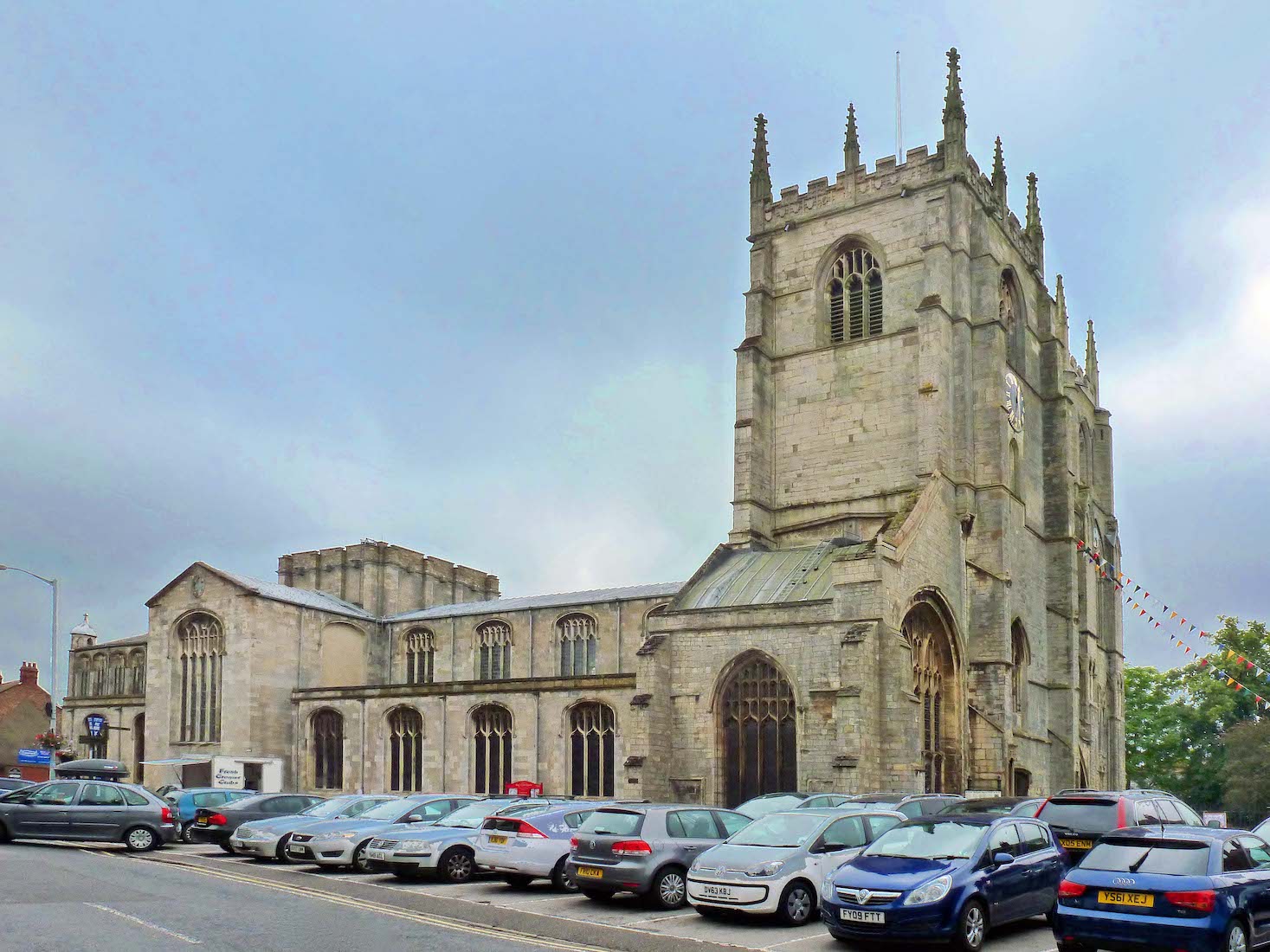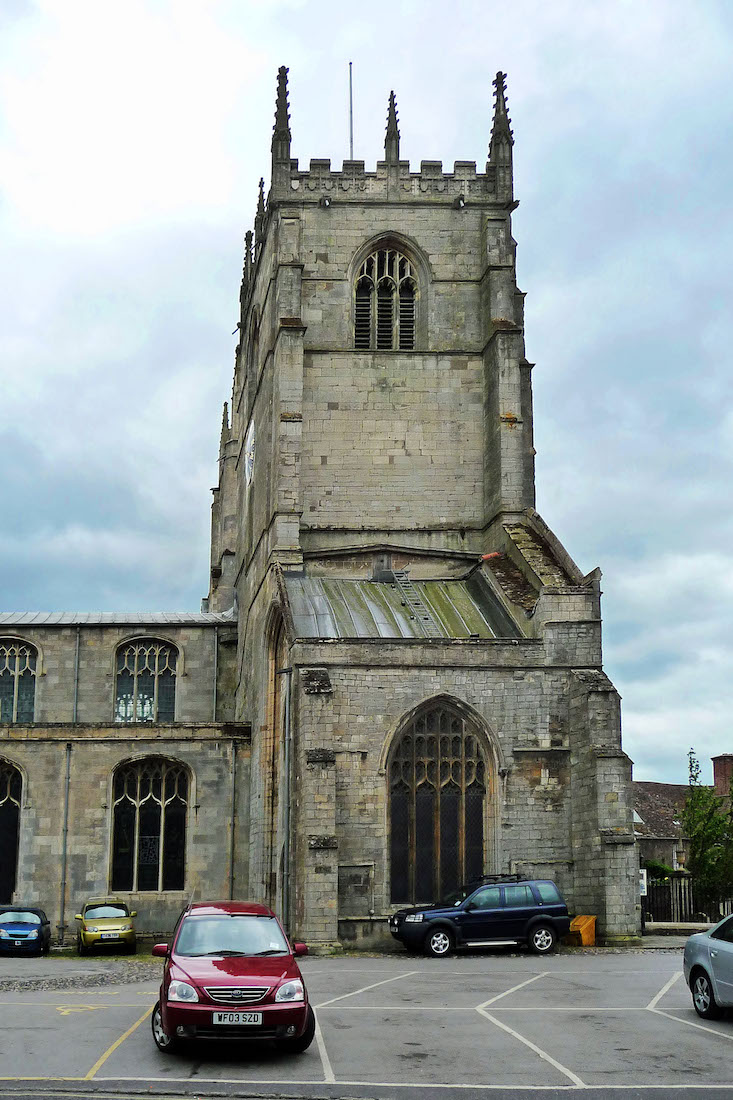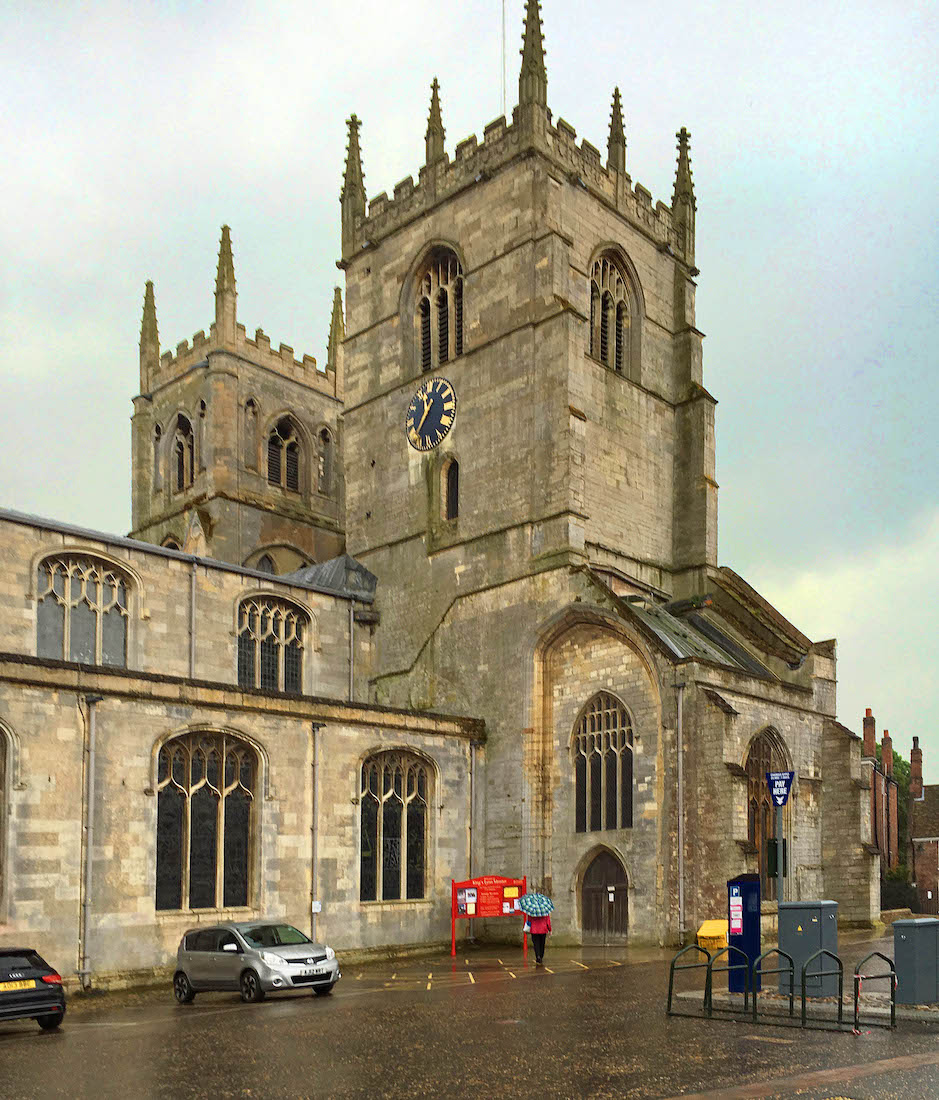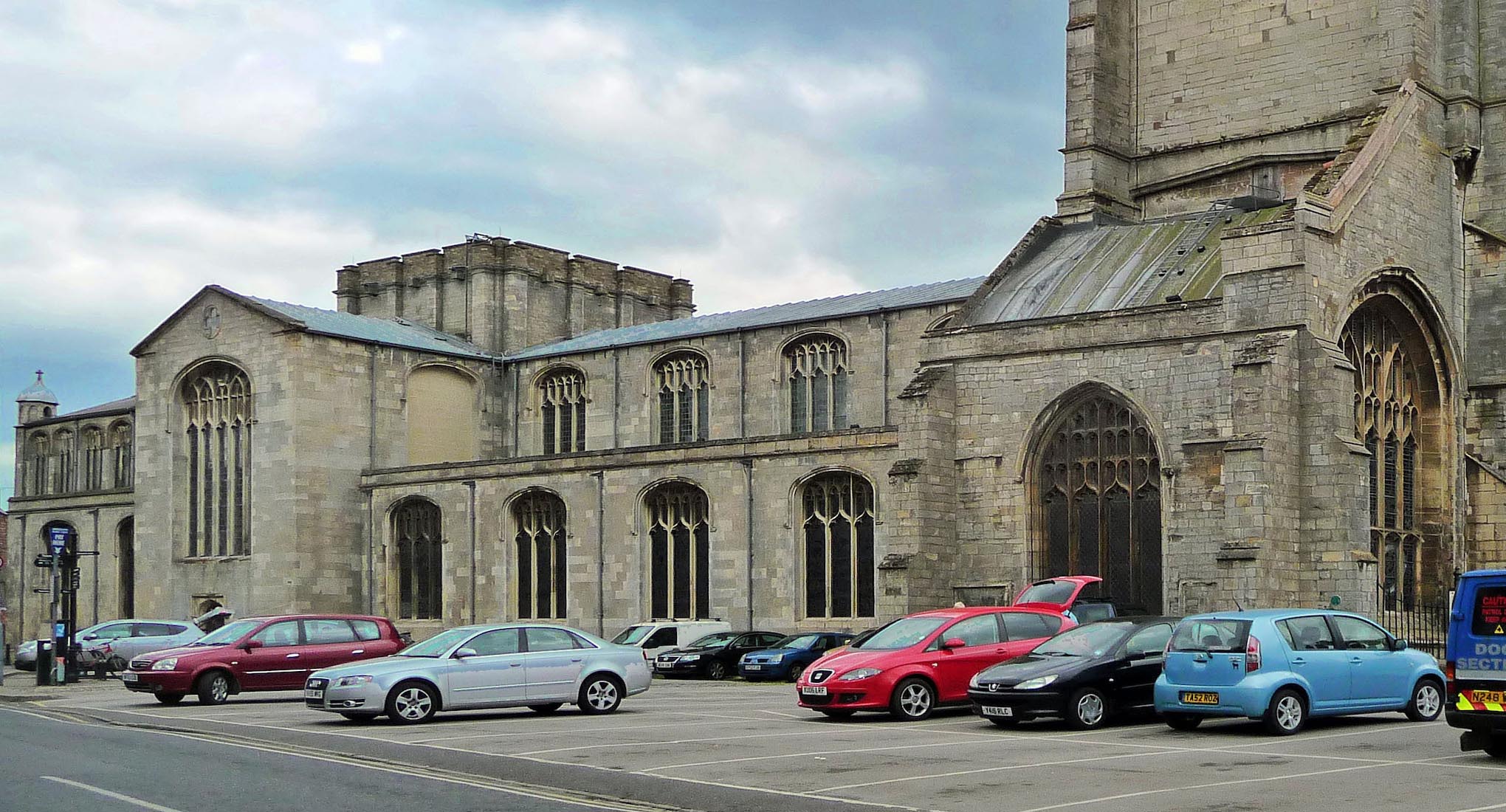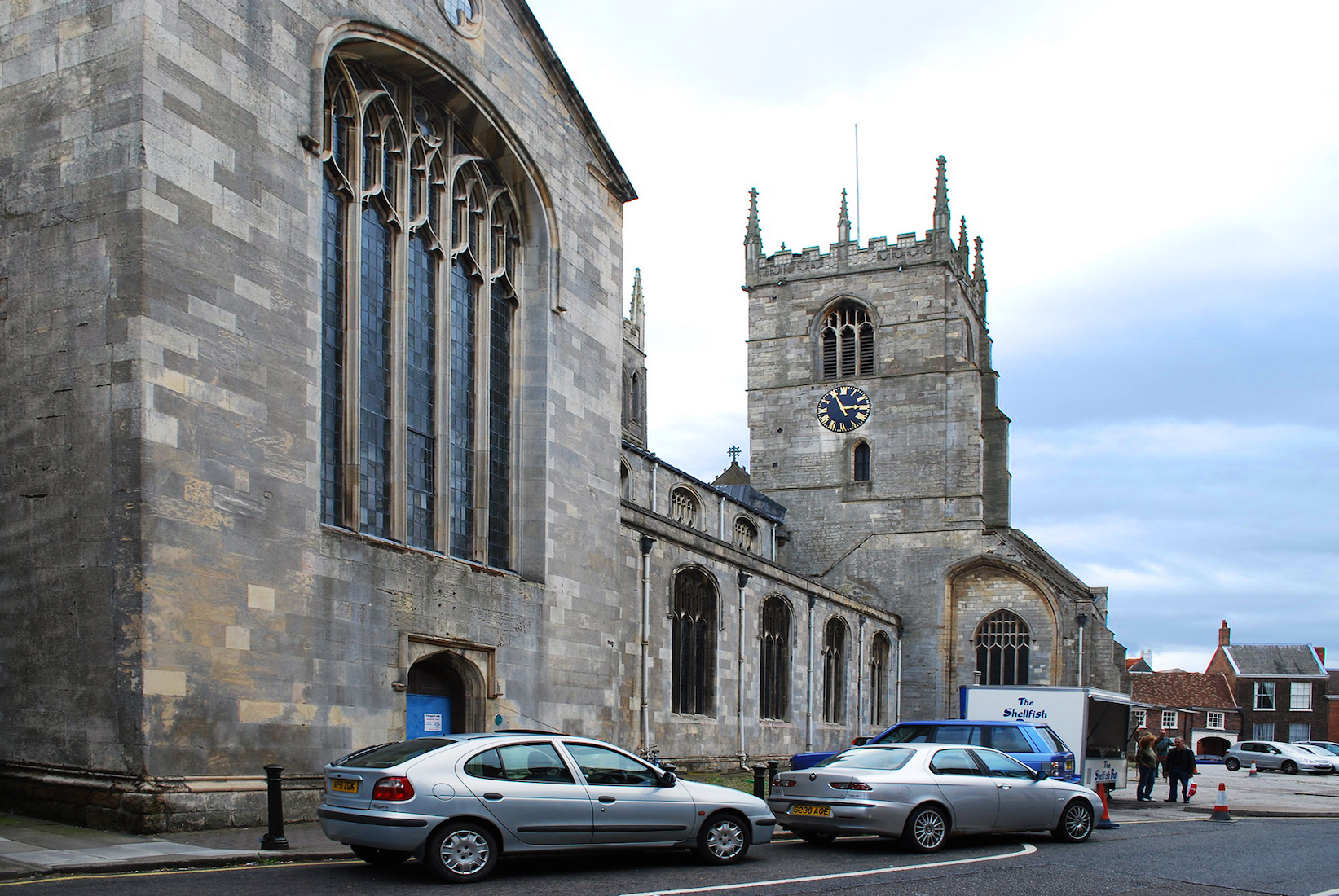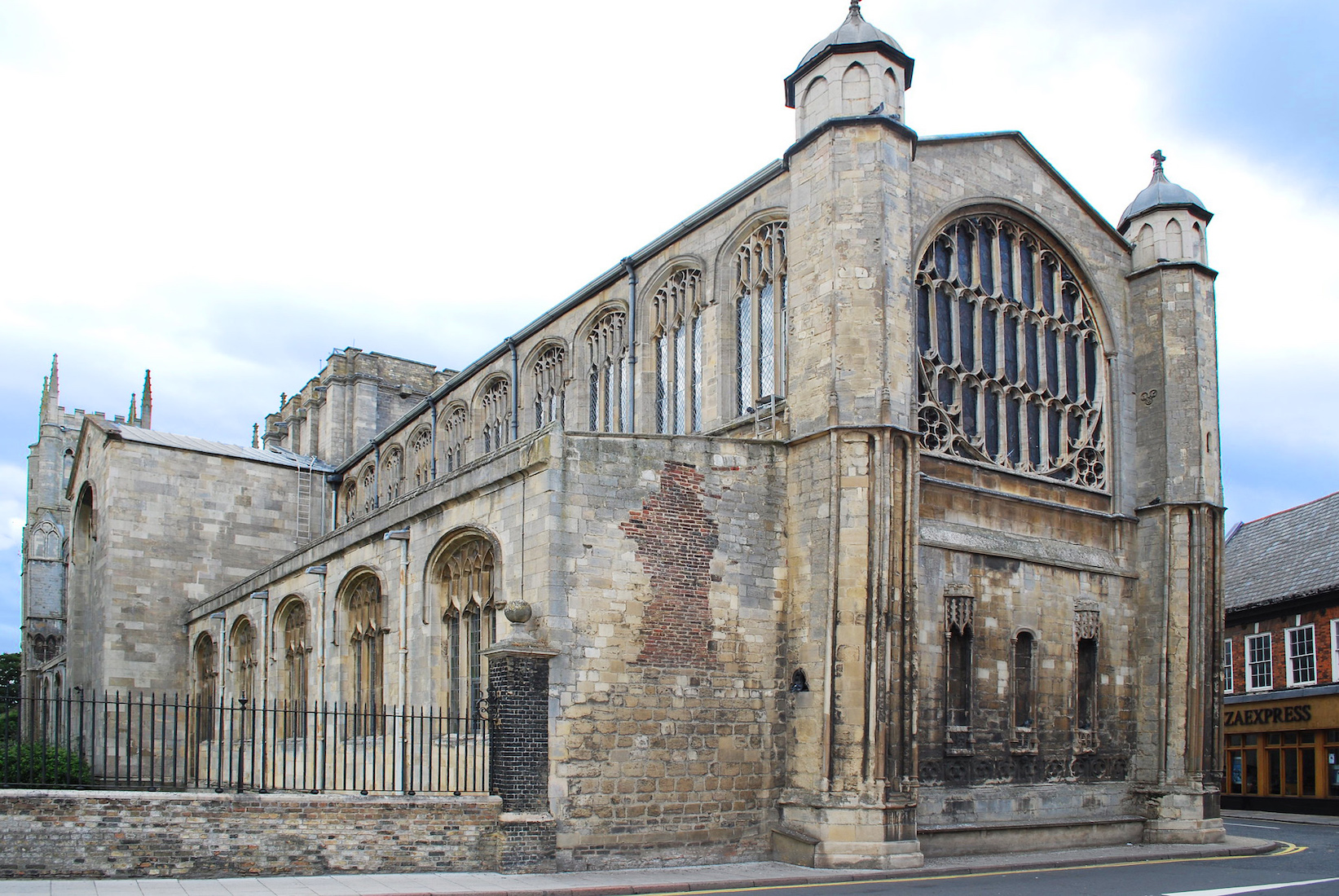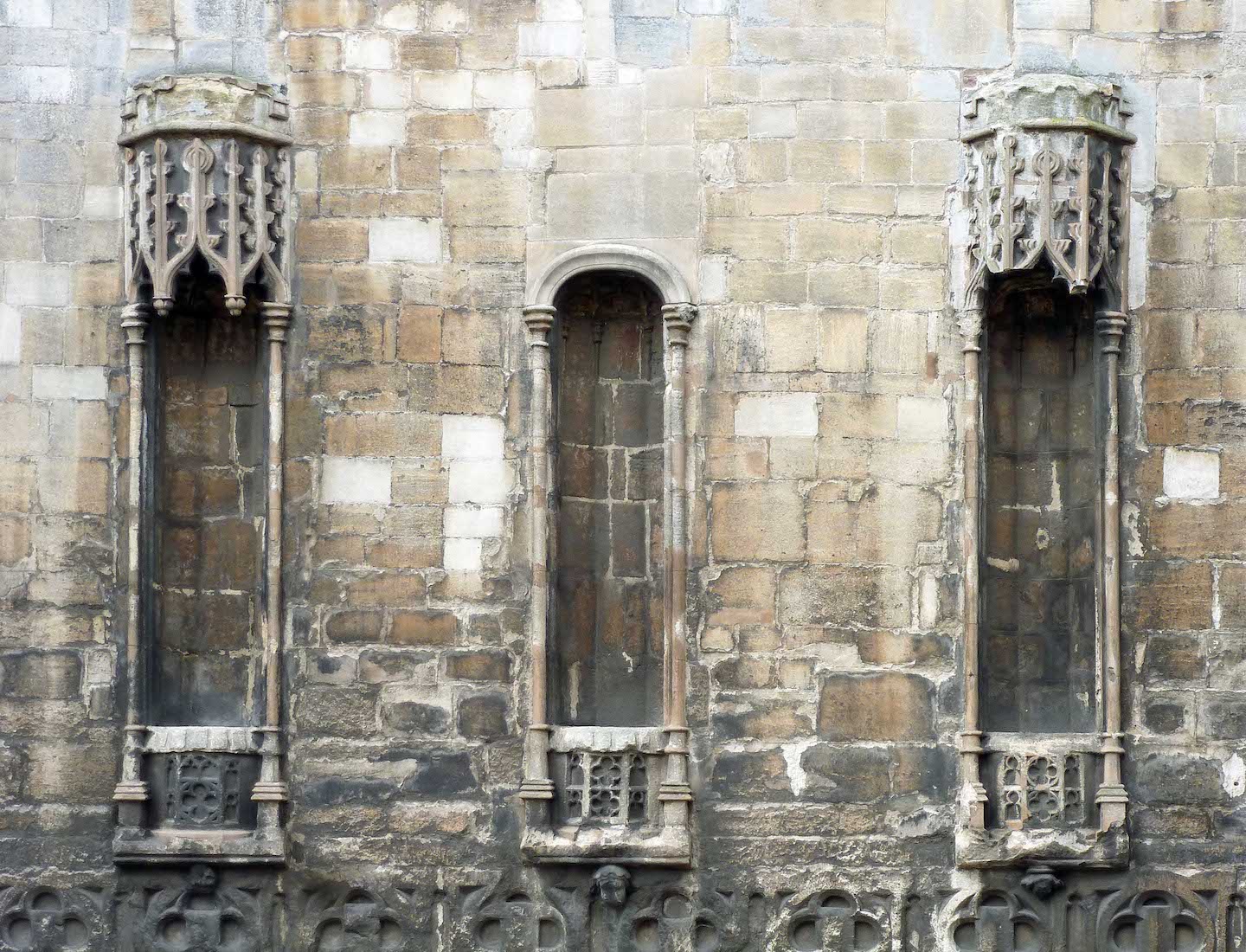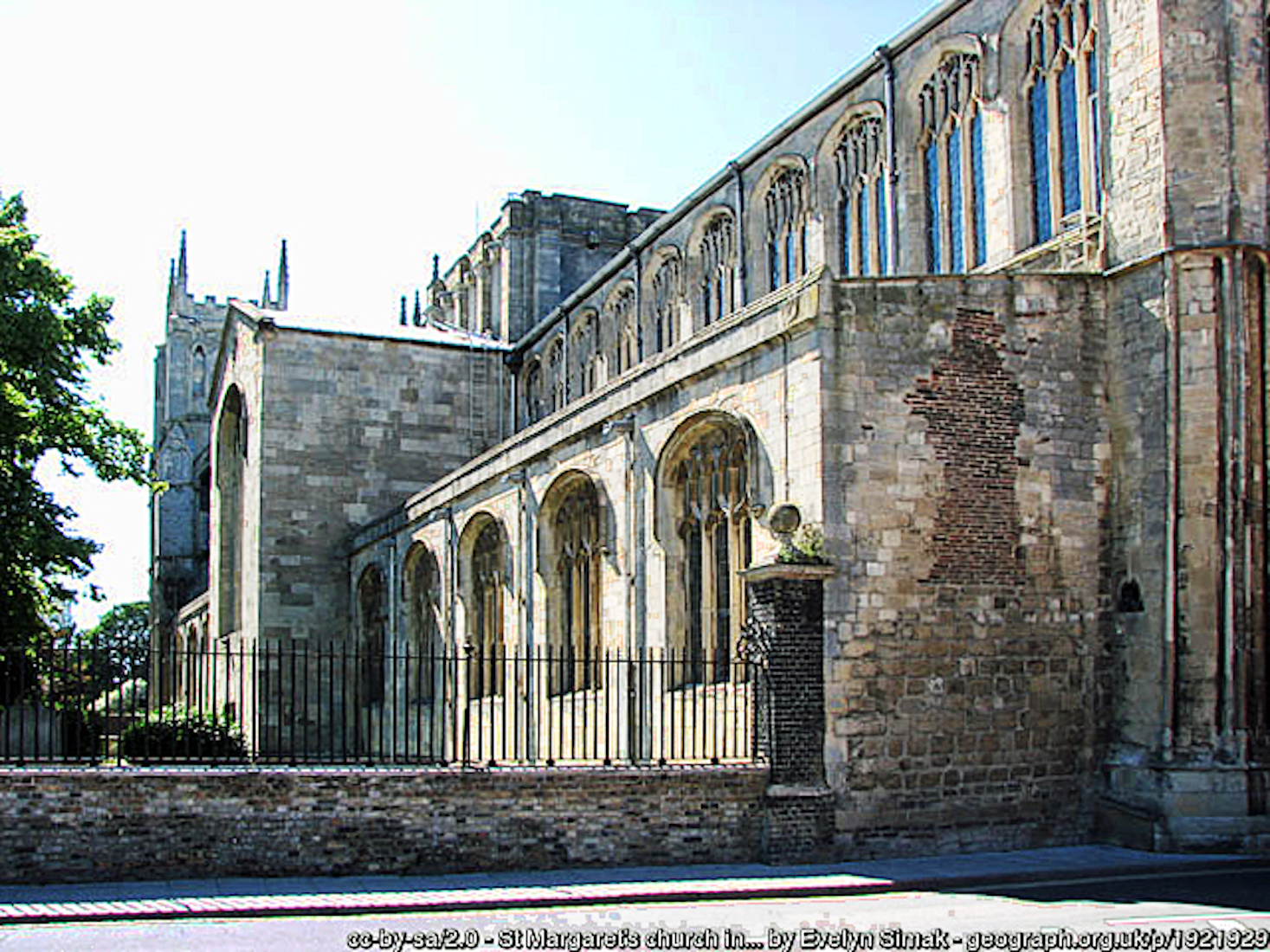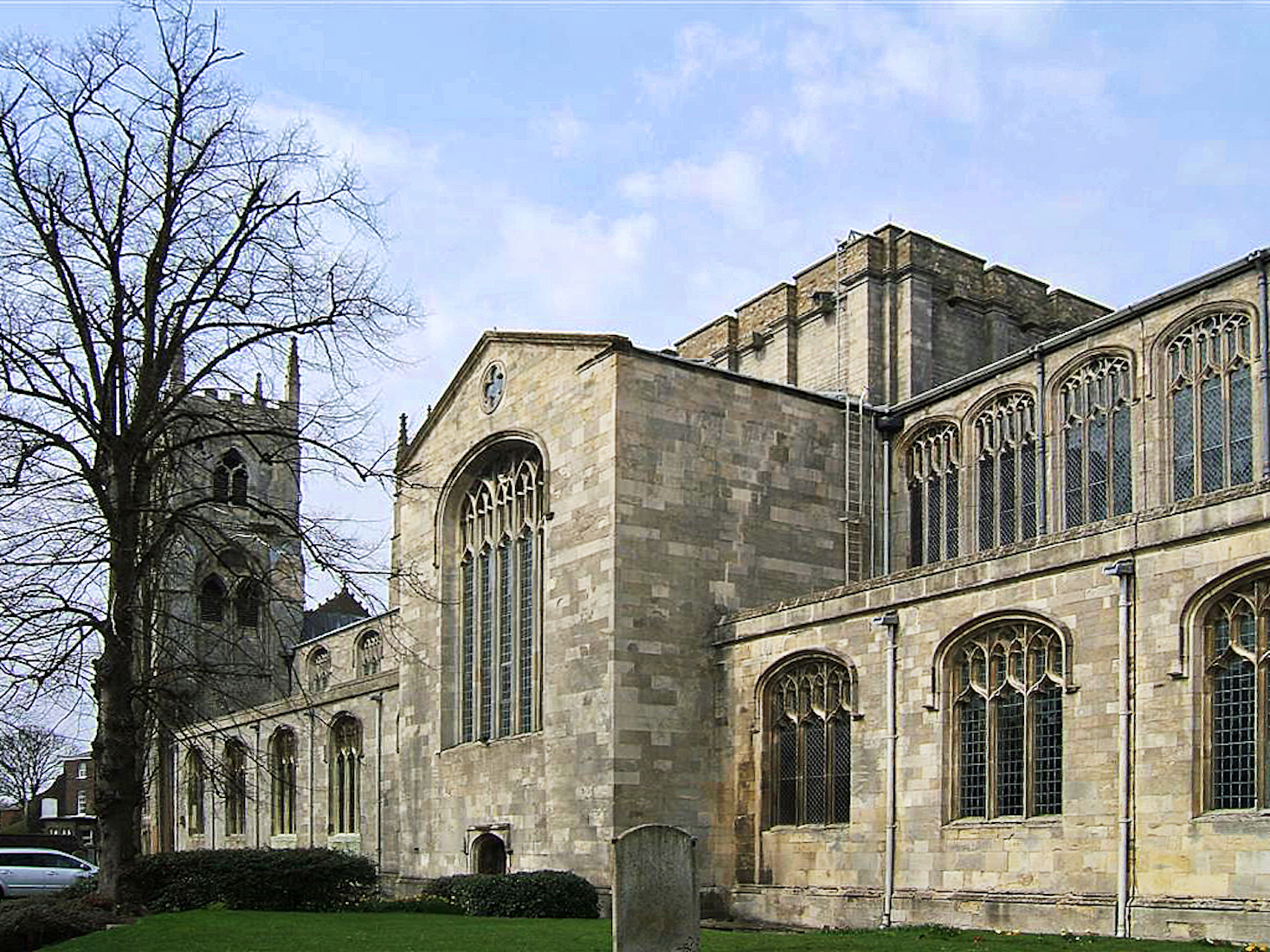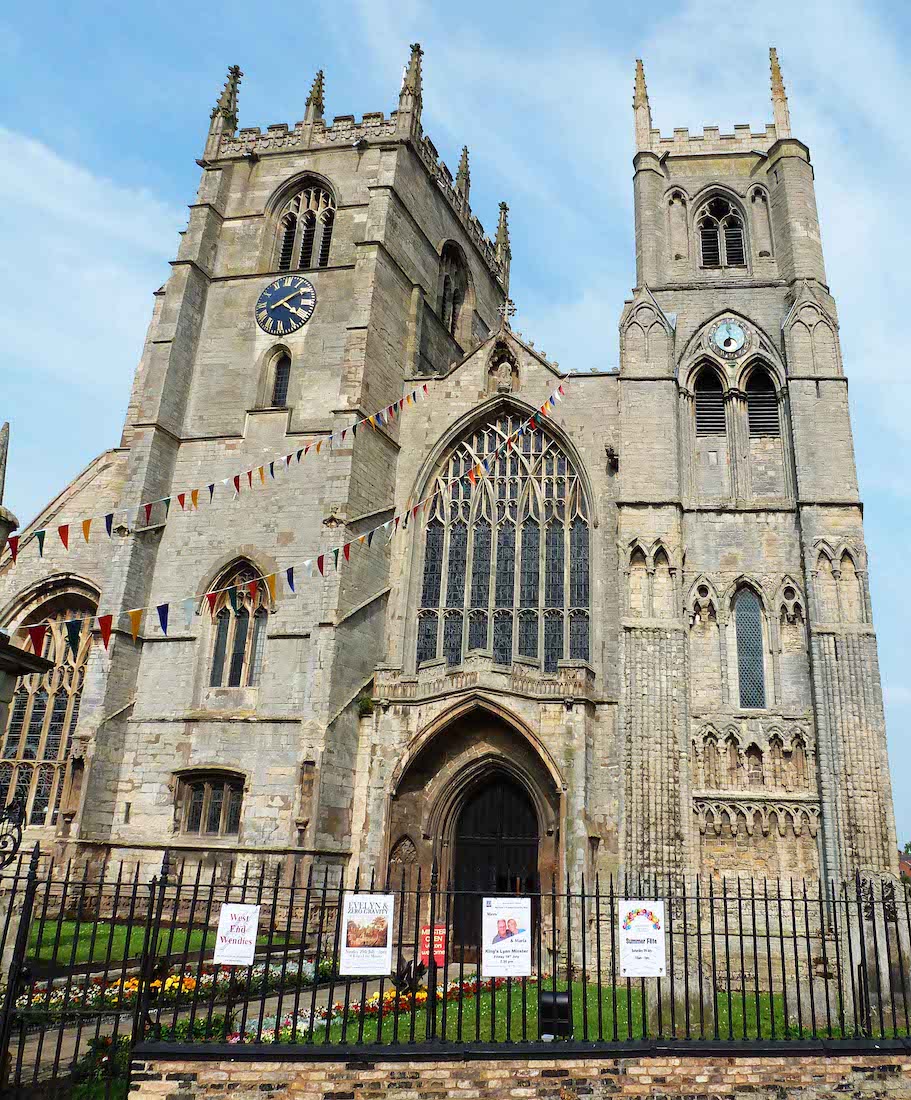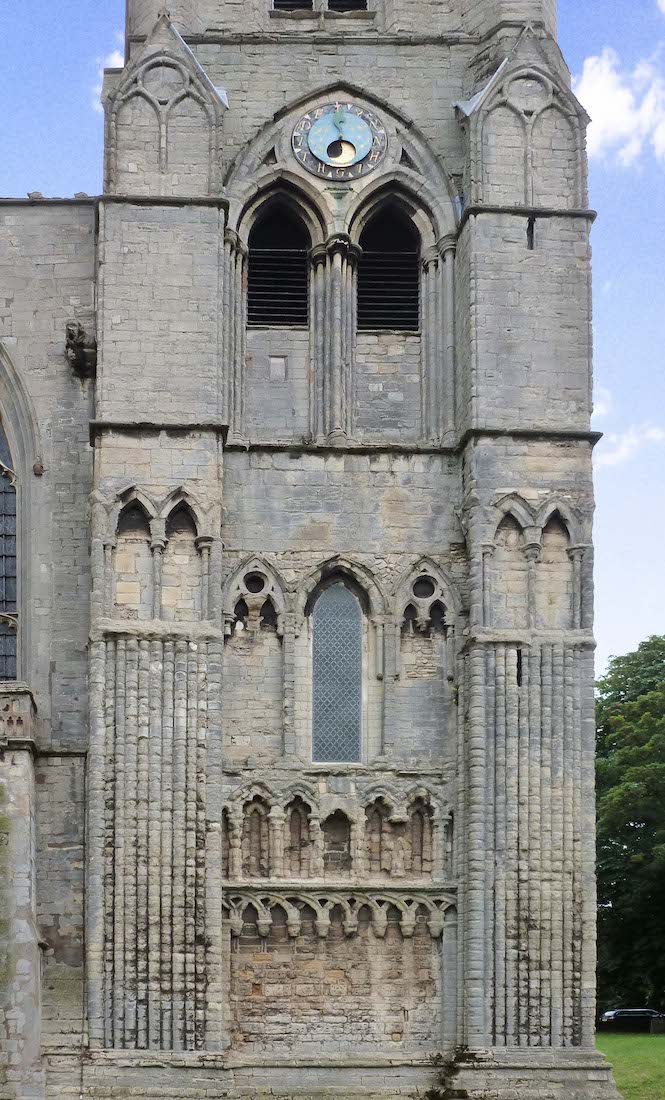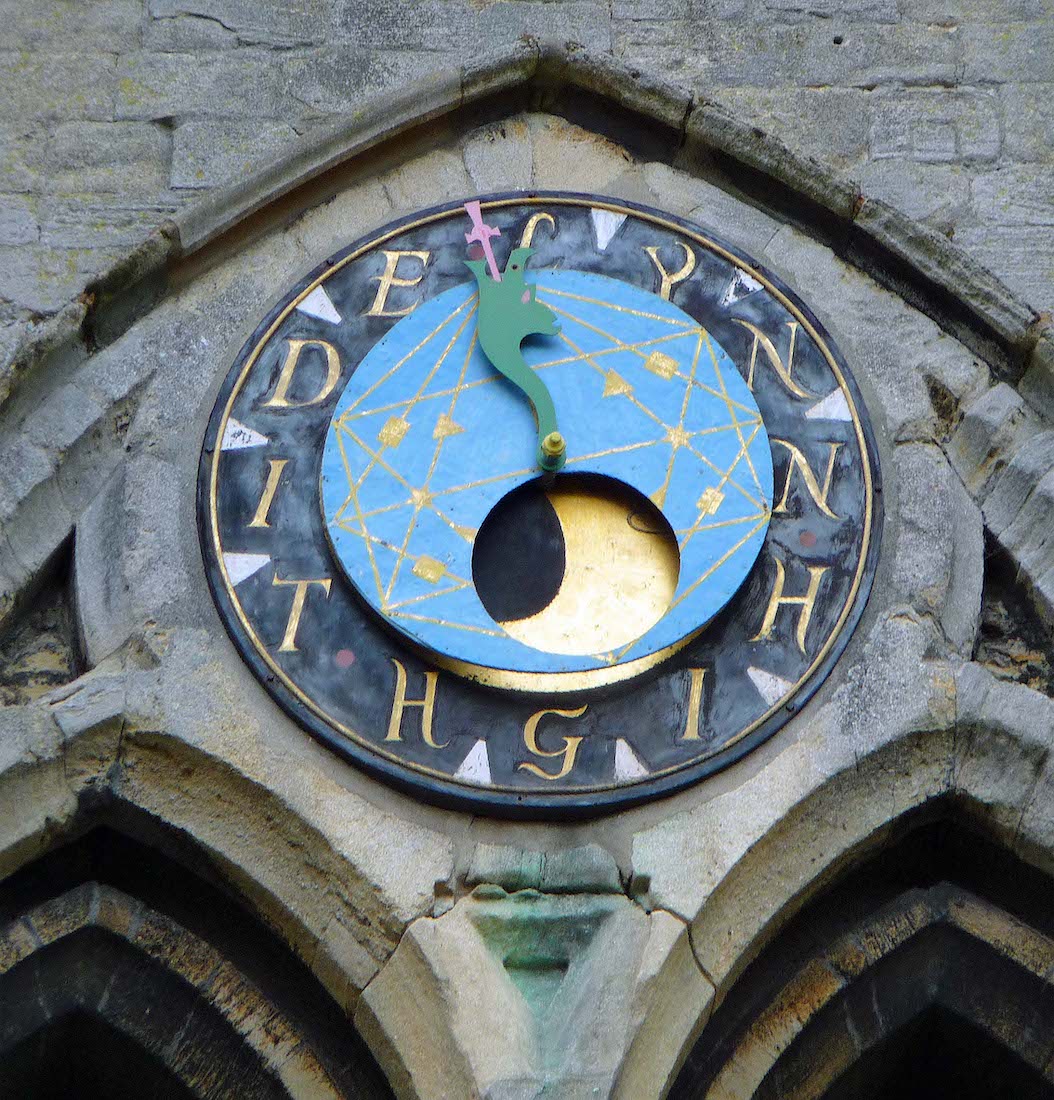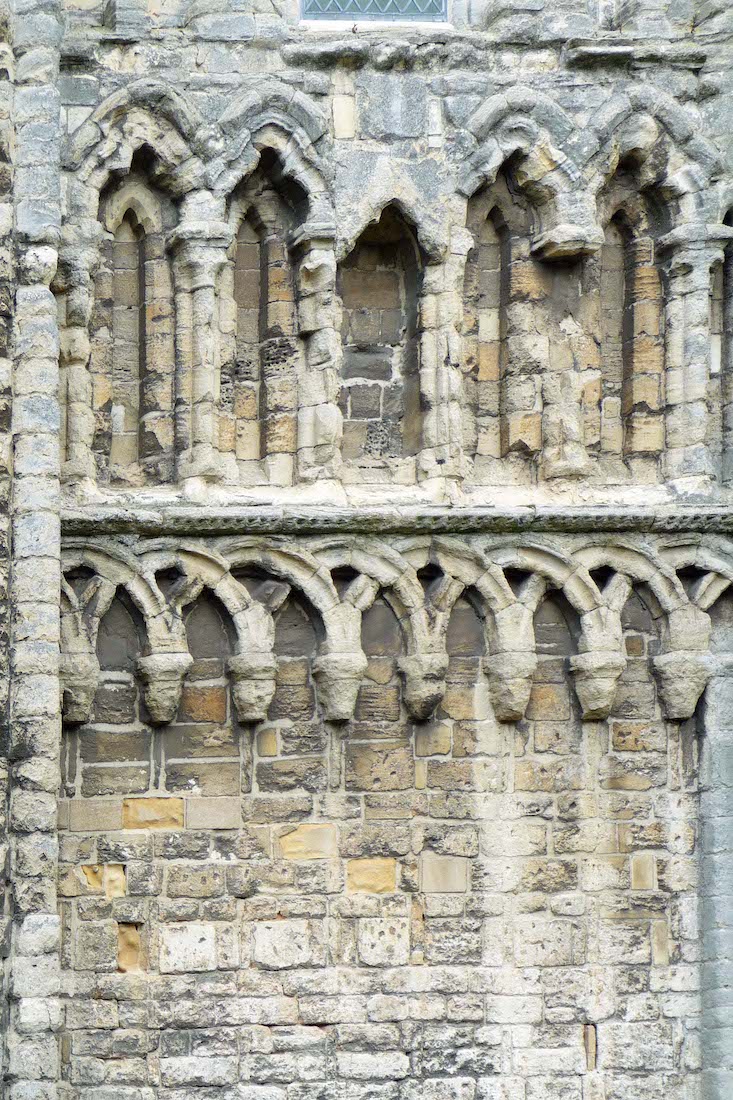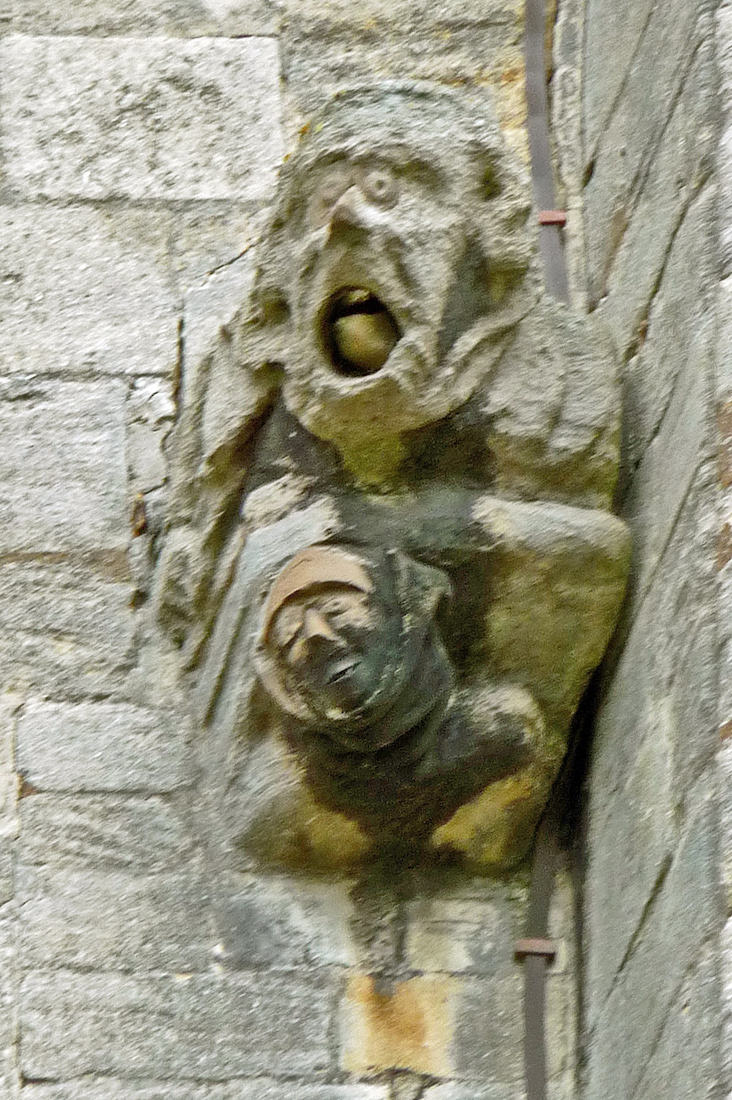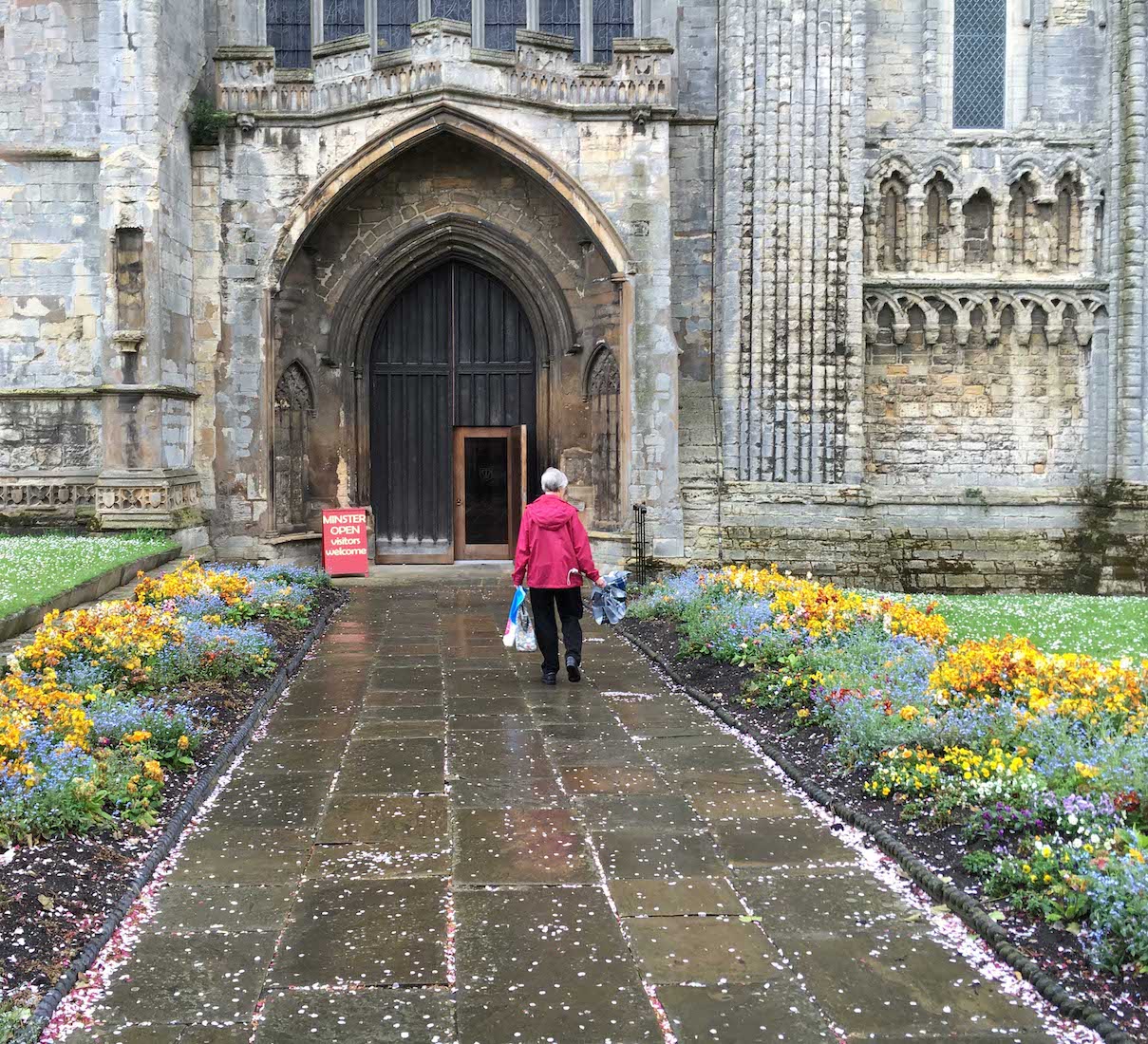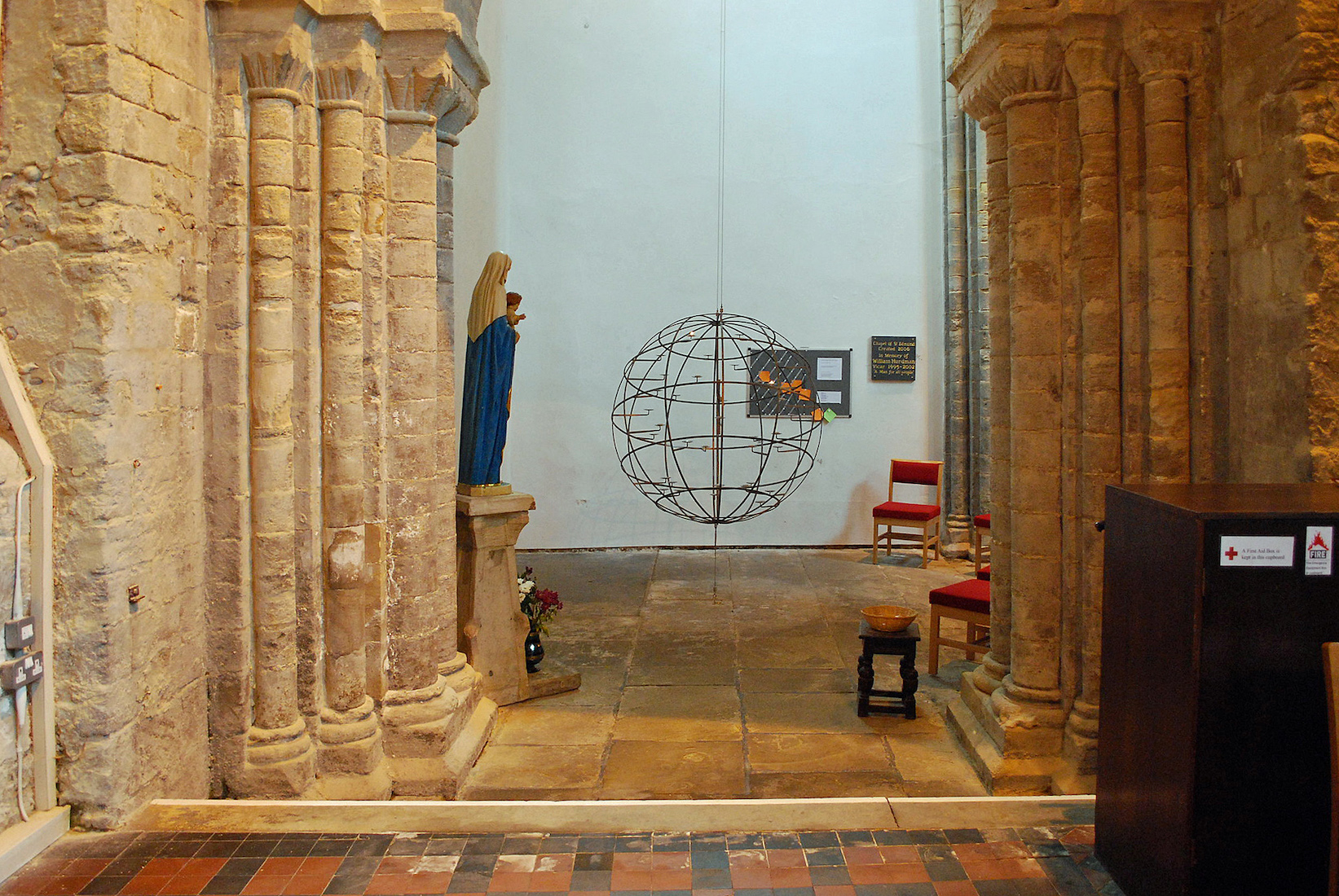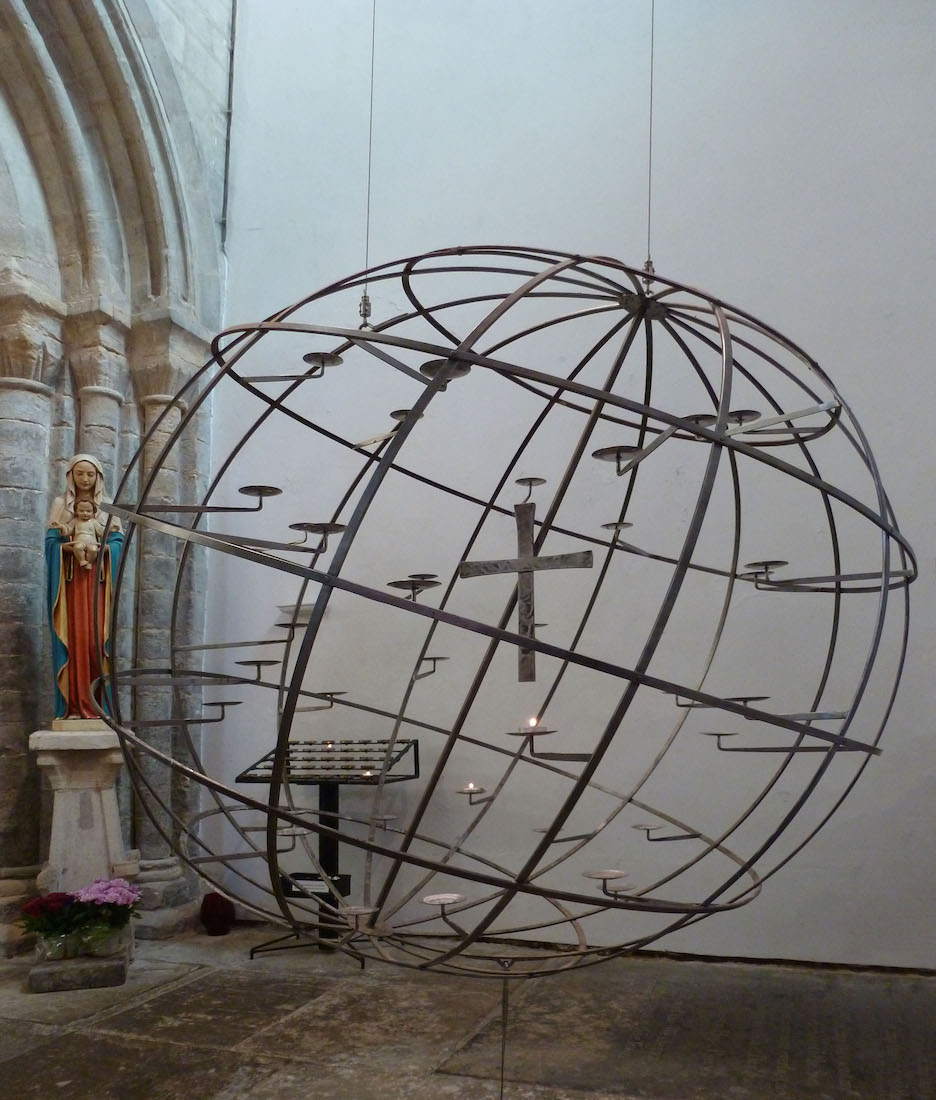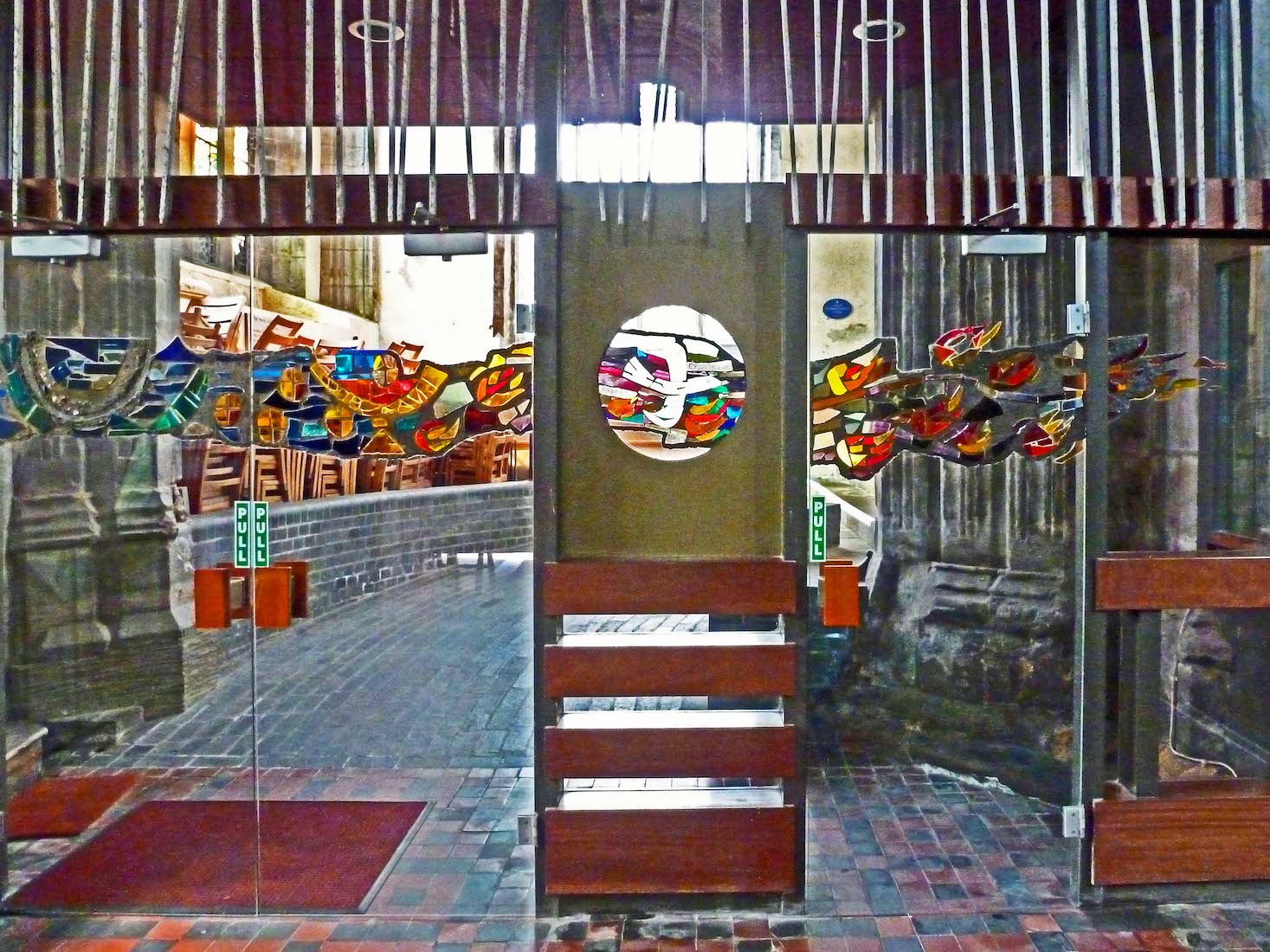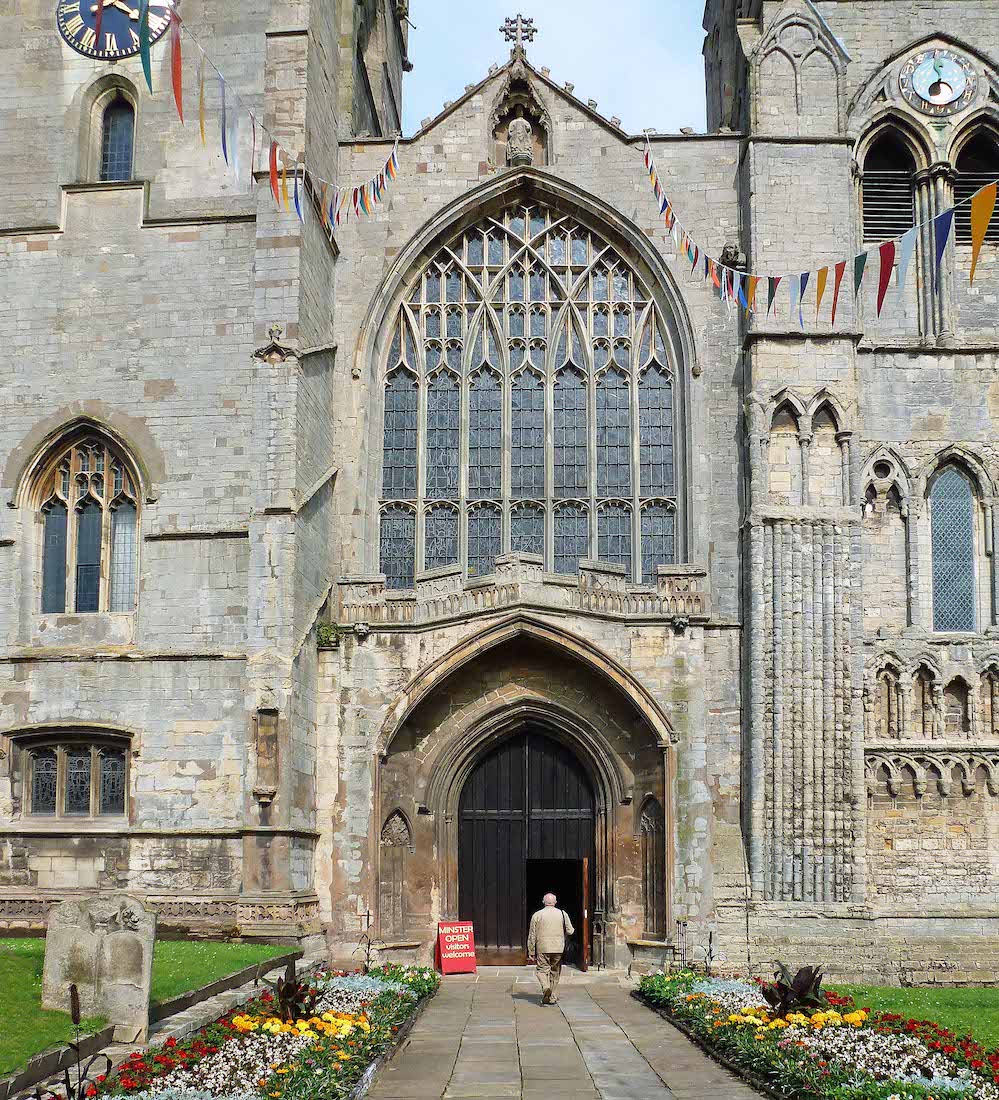
Lynn is a market town and seaport on the banks of the River Great Ouse. During its history it has been known as Lynn, Bishop’s Lynn and King’s Lynn, but these days it is generally known as Lynn. The Minster is close to the centre of town. The West entrance is off St Margaret’s Place, and colourful flower beds line the entry into the Church. The patron saint of the Minster is St Margaret who is said to have been martyred in 304. She is best known – at least in this Minster – for her alleged encounter with a dragon. Now is that St Margaret looking down from the top of the gable? Or Christ himself?
2. WEST WALL GA
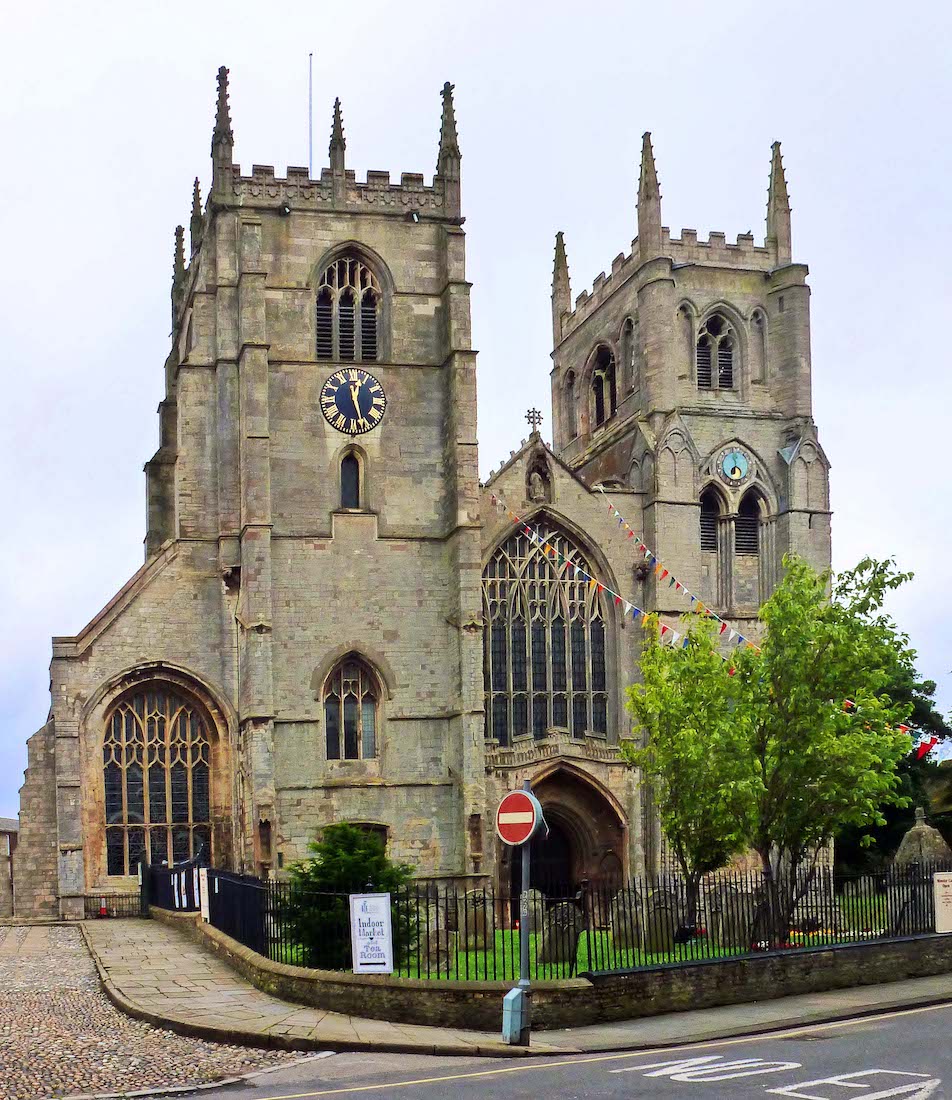
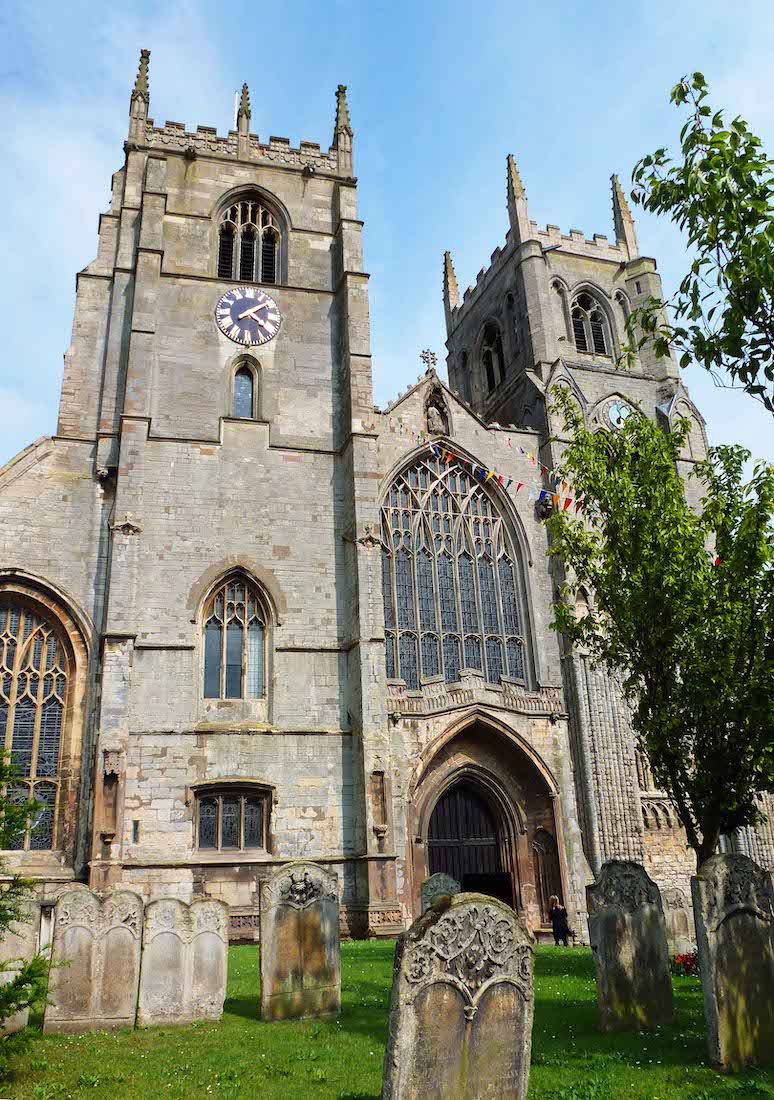
The building dates from the 12th to the 15th centuries: nothing quite matches, and nothing is square! Thus here, the slender 12th-century Southwest tower in the Early English Gothic style precedes the larger Northwest tower in the Perpendicular style of the 15th century. The two towers were originally surmounted by steeples. There are a number of old graves at the front of the Church.
3. VIEW FROM THE MARKET GA
The North side of the Minster is bounded by the Saturday Market, and history records disputes that arose between the Minster and prosperous Lynn merchants over the use of this area, particularly when the Minster extended further out.
4. NORTHWEST TOWER GA PRS
The Northwest tower is home for a set of ten bells – based on a ring of eight cast at Whitechapel in 1766. The treble and second were added in 1887, presented by the Mayor and his wife on the occasion of Queen Victoria’s Golden Jubilee. The bells were re-dedicated in November 2005 having been re-tuned and re-hung in a new frame by Taylor’s of Loughborough. The ninth has been re-cast. The ringing room was also reordered at this time. •• A row of shops once stood along the North sde of the Minster. These were removed by the Victorians, but the North Porch shows various signs of a past which was different.
5. FOLLOWING AROUND THE NORTH WALL GA
We continue our walk around the Minster. There was also once a huge central tower, but this is now much reduced in height. This was because of a disaster on 8th September 1741 when a gale brought the spire of the Southwest tower crashing down, destroying the lantern of the central tower and doing huge damage to the church nave.
6. BY THE NORTH TRANSEPT JJM
The transepts are impressive on the outside, but we shall find they are made more insignificant inside due to the abutment of the North and South aisles.
7. EAST FACE JJM
The East wall of the sanctuary is right on Church Street.
8. EAST WINDOW GA
The very large and round East window was added in the 15th century. Restoration of the Minster was carried out late in the 19th century, and some reconstruction of the window was carried out by Ewan Christian.
9. SOME UNUSED NICHES! GA
Beneath the East window, in the external East wall, are three large and elaborate image niches. These may have once contained a rood group. Because of the layout of the town, this East front is hidden away in a narrow side street, and is easily missed.
10. TO THE SOUTH GA
And so to the South wall of the Minster. In the near wall of the South aisle there is a strange brick pattern: a reconstruction, or a deliberate figure?
11. SOUTH TRANSEPT KLM
This is the most pleasant side of the Minster, where the crisp lines of the South wall can be viewed from a (small) park setting.
12. BACK TO THE WEST WALL GA
We complete our circuit of the Minster, returning to the old Southwest tower.
13. SOME OLD MASONRY GA
There are many styles of architecture evident in this tower. The Norman architecture of the time is still visible near the base of the tower. You can see the intersecting arcading and reed moulding which are characteristic of the Norman style. This is the earliest of the Church fabric. Further up the tower is the 13th century Early English architecture, while the top layer is 14th century Decorated Gothic. There used to be a tall spire on top of this tower. Notice the grotesque near top left.
14. MOON CLOCK GA
This Moon or Tide clock originally dated from c1690. It is a faithful C20th reproduction of the original clock made by clockmaker and churchwarden Thomas Tue and shows the phases of the moon, and with a green dragon's tongue the time of the next high tide on the River Great Ouse. Being so high in the tower it was easily visible from the port and the river. The letters in 'LYNN HIGH TIDE' are arranged on the even hours, two hours apart starting with the 'L' at 12 o'clock, 'G' at midnight and with dots and triangles the odd hours, thus a 24-hour dial. The dragon pointer of the clock completes a full rotation every 29.5 days. If the pointer indicated a high tide at "H" (2 a.m.), then the opposite mark ("Y") would be almost the time (within 25 minutes) of the next high tide. A mechanism also controls the moon that revolves eccentrically behind a hole and indicates, by its position, the lunar phases. The blue inner disc is fixed to the dragon pointer. The life and times of the Lynn township have obviously always been affected by its nearby tidal river.
15. WALL DETAILS GA
Close up views of the old arches and the grotesque.
16. TIME TO ENTER PRS
Time to go inside, walking up this avenue of flowers. Unfortunately it has been raining in Lynn ... a not uncommon occurrence?! Just to the right of the entry door are some markings registering past flood levels.
17. ST EDMUND’S CHAPEL JJM
We enter into the Minster, and on our right, down a couple of steps is the St Edmund’s Chapel. This is an uncluttered and undecorated space with a Madonna and Child figure, and a large central globe. (In fact this view is from the South nave aisle.)
18. PEACE GLOBE GA
Visitors to the Minster are invited to light a candle in the St Edmund Chapel, to place it on the Peace Globe, and to say a prayer.
19. THE FORMER NORTH PORCH JJM
Some years ago when you entered the Minster, this was the view to the left, towards the North porch. The leaning columns are not a trick of photography: there have been many problems with the North tower over the years.
20. MEMORIAL WALL GA
Looking through the glass doors, we see that here the North porch is being used as a storage area. There is a decorative stained glass feature across the doors, reminding us of Pentecost, and a memorial roundel.


